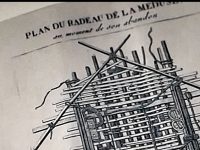Study. THE PROSTITUTE IN LITERATURE

BLUE ANGEL, PRETTY BABY, AND PRETTY WOMAN The images of prostitutes in film derive from a long history of earlier texts-poems, plays, and novels that commodify prostitutes as a subordinate group even within the larger group of women, itself subordinate to men. Virtually all of these images are reductive, defining a prostitute not as a complete human being, but as merely a collection of sexual parts. The terms used to signify a female prostitute indicate that she is a thing rather than a person-an entity limited to her sexual role. Descriptors are synonyms derived from her working hours (« lady of the evening »), working conditions (« street walker »), body parts (« piece of ass »), and anatomical resemblances to animal life (« beaver, » « pussy »).
These modes of expression reveal the socially reified view of the prostitute as an object-a signifier denoting the patriarchal judgment of prostitution as a typically deviant or « other » (de Beauvoir 1953) human behavior characteristic of women. This view has found expression in the literary canon, where up until the recent past, the prostitute has been depicted primarily by male writers. Their focus has been on the psychology of the individual prostitute, rather than on the holistic view of the sociology of prostitution that embraces the consumer as well as the consumed (Horn and Pringle 1984). Because the prostitute has been almost exclusively a masculine literary creation, male writers have created limited fictional roles for prostitutes, usually depicting them as stereotypes rather than as individualized human beings. Further, the study of prostitution in literature-until the advent of feminist scholarship in the 1970’s-has also been shaped by an androcentric perspective concentrated on the masculine literary response to images of prostitution (Hapke 1989). In consequence, there has been very little research from the woman’s perspective on « literary works about women paid for sexual services » (Hapke 1989, p. 5).
Feminist literary critics started to examine the image of the prostitute in literature from a female point of view during the 1970’s. This stream of research extends to the study of prostitutes in films, where the cinematic portrayal of women has begun attracting research attention from feminist film critics (Jacobs 1991, Kaplan 1980). Thus, the images of prostitution in film occupy a central space in the transition from literary texts to consumption lore.
FOUR ARCHETYPES OF PROSTITUTES AS CONSUMED COMMODITIES
The ideological conflicts and ambiguities expressed in the literature on prostitution are far from resolved. However, images of prostitutes do cluster into several archetypes of the prostitute as a commodified object (Horn and Pringle 1984). The archetypes differ because the female prostitute in literature and film exists largely as a projection of male fantasy and thus is depicted as an embodiment of the different female types desired by different men. Our present typology of prostitutes is derived from Horn and Pringle’s (1984) nine-category typology, itself based upon fictional works-mainly British, American, and Continental plays and novels-written by male writers and written about by male critics. These works have entered the literary canon-a generally accepted body of literature deemed worthy of scholarly attention-by means of literary criticism, in which interpretation has also been male-dominant up until the present generation.
The Horn-Pringle methodology is inductive, in that it surveys an entire domain and then derives categories from exemplars observed within that domain. In literary criticism, this method is a traditional one dating back to Aristotle (Fergusson 1961), whose Poetics draws general principles of tragedy from the extant Greek tragedies with which he was familiar. A modern example of inductive criticism is Frye’s Anatomy of Criticism (1973), in which a schema for sorting texts into categories is developed by examining the textual universe available to the scholar. Thus, we follow literary tradition and rely upon Horn and Pringle’s data and methods for discerning archetypes of the prostitute in fictional works.
However, we have modified and updated the Horn and Pringle typology by condensing their original nine archetypes into a more parsimonious set of four relevant to cinematic texts. Film is a new art form that both reshapes traditional literary archetypes and adds a postmodern feminist perspective (DeLauretis 1984; Kaplan 1983; Kuhn 1982; Mayne 1985; Penley 1988). Thus, while we begin with a historical typology, we adapt it to suit contemporary data and current ideological influences. This type of analysis can be viewed as interpretive cluster analysis, for our interpretation of the underlying structure of each film was used to categorize or cluster it within a general literary schema derived from prior prostitution narratives. In this approach, the films are ‘mapped onto’ categories of prostitution believed to reflect overarching cultural beliefs and values regarding prostitutes, such as how prostitutes behave; how they look and dress; and what outcomes occur in their lives.
Four Quadrants
The dialectical dimensions for the proposed typology are Good versus Evil and Punished versus Unpunished. They relate to two key elements of drama-character and plot. These elements are essential to drama, the category into which all films fall, for they are performances designed to be viewed. Character and plot are intertwined, for in most western literature the notion of « character in action » prevails-that is, the action of plot is rooted in the nature of the characters, and what the character is determines what happens to him or her. The typology expresses a bipolar opposition of Good versus Evil that refers to the prostitute’s character-character is composed of the traits, behaviors, and motivations of the central figure. The other bipolar opposition-Punished versus Unpunished-refers to the plot of the text; it defines the outcome of the action and summarizes what happens to the character.
It is important to note that these are orthogonal constructs, because Goodness and Evil as marks of character do not necessarily determine the prostitute’s fate in our texts. That is, evil prostitutes may be portrayed as living happily ever after, and good ones may be shown to suffer horrible lives and painful deaths. The importance of this tenuous relationship between character and plot derives from the lack of moral geometry that is characteristic of the literature on prostitution from which these cinematic images flow. From a feminist point of view, the underlying male-dominance in the images of prostitutes is evident in mismatches between character and plot. The « rules » of dramatic structure are suspended when prostitution is the subject, and outcomes need not be firmly tied to sound dramatic architecture.
The defining criteria of each quadrant are described below:
I. Evil-Unpunished
The archetype of the evil but unpunished prostitute termed Evil Eve is traceable to the Biblical figure of Eve as portrayed in misogynistic early Christian literature. In such texts, the dramatic emphasis is placed on the coexistence of seductive and evil traits in the same woman. The woman further exhibits cynicism and world-weariness in conjunction with great physical beauty. She is a coquettish moody seductress whose narcissism brings men sorrow; her destruction of the men she attracts is depicted as almost accidental or careless. The Evil Eve figure is a survivor, despite her evil ways. She remains alive at the end of the narrative and no punishment is meted out to her. In literature, Manon (Prevost 1731; Puccini 1893) is an early example of this archetype-a flirtatious and emotionally unstable woman who seduces men, bringing them momentary happiness but eventual sorrow. Her story has been popular; it was first told in novel form by Abbe Prevost (Manon Lescaut, 1731), and later turned into two operas-Massenet’s Manon (1885) and Puccini’s Manon Lescaut (1893). In the present inquiry, this archetype is represented by the character of Lola Lola in the film The Blue Angel (1929).
II. Good-Unpunished
There are three subtypes represented in this quadrant, each representing variations on the oppositional theme of Good-Unpunished characters. The first is termed the Whore-with-a-heart-of-gold and is derived from the Romantic tradition that emphasized the innate goodness of humanity. A second subtype is termed the Saved Sinner and is derived from Christian doctrine originating in the forgiveness of the prostitute Mary Magdalene. In these texts, the prostitute is redeemed through a conversion process set in motion by others. Typically, the person responsible for initiating the prostitute’s salvation risks his own reputation on her behalf.
The third subtype is labeled the Material Girl and is traceable to the Marxist/Socialist view of capitalist society. Here the text emphasizes the prostitute’s economic motivation-the necessity for her to earn a living. The text also serves a larger metaphorical function of indicting capitalist society as one in which most persons are prostituted in various ways. At the narrative’s conclusion, the prostitute is saved by means of her own efforts. A literary example is Shaw’s Mrs. Warren, in Mrs. Warren’s Profession (1894). Within the present inquiry, this subtype is portrayed by means of the character of Vivienne in Pretty Woman (1991).
III. Good-Punished
This archetype is labeled the Hapless Harlot and is traceable to the advent of Realism in the modern novel. Here, the text’s focus is upon social forces that drive individuals into prostitution. Often the narrative centers around an innocent child who is seduced, abandoned, and left to a life of misfortune and poverty. Both young men and young women are depicted as becoming prostitutes through this process. In these narratives the life of the prostitute is shown to be degrading rather than glamorous, and typically, even if the victim is rescued from the profession, his/her life is portrayed as forever damaged. Literary works depicting this archetype include Charles Dickens’ Little Emily in David Copperfield (1849-1850). The character of Violet in Pretty Baby (1977) exhibits this pattern in the present study.
IV. Evil-Punished
The fourth quadrant includes texts in which the prostitute is depicted as evil and punished as a result. Termed the Bitch Whore archetype, this character is derived from the early Christian view of pagan goddesses as seductresses who led their lovers to ruin and death. Such evil women were to be punished by horrible deaths-disease, disfigurement, or murder. Characters in this category are often shown to be vengeful creatures who direct their anger at all men or society at large. A literary example is Emile Zola’s Nana in Nana (1880). Although we did not include this archetype in our present film sample, this character type is recognizable as Tralala in Hubert Selby’s Last Exit to Brooklyn (1957). Tralala dies as a result of gang rape, and represents but one of many prostitutes whose death becomes the climax of violent pornographic films. This archetype is most evident in pornography, where the implicit misogynistic desire to inflict pain upon women often culminates in torture and murder.
Cinematic Examples. As noted, the present inquiry examines three American films dealing with prostitution, which span a time period from 1929 (The Blue Angel) to 1991 (Pretty Woman). As described previously, our inquiry focuses on these selected exemplars in conformance to the conventions of inductive criticism. The films in our sample were chosen as representative examples of prostitution in American motion pictures, but obviously are not intended to constitute a complete universe of all possible ways that prostitution has been portrayed cinematically. The use of exemplars to discuss cultural archetypes in film follows Denzin’s (1991) cinematic analysis of alcoholism. As in Denzin’s analysis, we focus attention upon films that have received significant critical acclaim and/or substantial commercial success.
1. Evil-Punished: « Evil Eve »
An early and iconic cinematic depiction of the Evil Eve archetype is found in Marlene Dietrich’s portrayal of « Lola Lola » in The Blue Angel (1929). This archetype embodies cultural beliefs regarding the prostitute’s cruelest and most evil manifestation-as a seductress who leads her lovers to ruin and death. This type of prostitute is portrayed as having few redeeming moral qualities; the core of her being is the projection of beauty, for she attracts lovers not by what she is, but by what she appears to be. Her ability to convey sensuality is a cover for underlying moral viciousness, but the mask is so artistically wrought that her lovers fail to see beneath it. (Motion picture synopsis available from authors).
Lola Lola is a glamorized version of Evil Eve, the alluring singer/performer who enchants and then destroys Dr. Rath. Her sexual power is signalled by her costume, for one of the hallmarks of prostitution is clothing designed to reveal the merchandise. Since clothing is a status-marker denoting women’s social position, as de Beauvoir pointed out, it is « only the prostitute, functioning exclusively as an erotic object, who displays herself as this and no more (1953, p. 592). » However, the effect of the provocative clothing not only reveals the body but also hides the soul-that fundamental kernel of evil at the heart of Evil Eve. From a misogynistic perspective, whenever women become sexually visible, they are potentially dangerous.
Lola Lola further personifies the ambiguous association between entertainment, beauty, and sexual pleasure, for her talent is intertwined with her stage seductiveness. She acquires value as a unique product by offering her special singing talent to the audience, thus showing herself as more humanized than the mere display of flesh captured by her pictures would suggest. She exists more in the realm of « art » than that of pornography (de Beauvoir 1953), and in this she resembles the Greek hetera or the Japanese geisha-the woman who treats not only her body but also her entire personality as capital to be exploited. Like those prostitutes, less tainted by misogyny than later Western ones, Lola Lola is in control. Her sole motive is profit: she sells her singing talent (her stage self) and her visual image (pornographic pictures). Thus, she commoditizes herself, and in so doing, perverts her talent in order to enslave men and to satisfy her need for comfort, security, and power.
In the text, Lola Lola is portrayed as a dangerous woman because she is a successful woman. She succeeds in making her own money and thus gains economic independence in her life outside of the traditional bounds of marriage. She earns a living as does a man, is uninhibited in her behavior and conversation, and consumes alcohol and cigarettes openly. When she marries Rath, she exhibits male sex role prerogatives: first by seducing him, then by supporting him, and finally by discarding him for a younger partner. Rath’s decline is traced by his loss of money, social position, self respect, and ultimately, life itself.
The narrative uses semiotic markers to reinforce the danger of thus sex role reversal, one that portends disaster for any man captivated by Lola Lola’s siren song. The black musical doll is a symbol of her figurative emasculation of Rath in their first sexual act, a humiliation that is prefigured when Rath awakens holding the doll. It foreshadows his eventual loss of manhood, for in this era-recall that the film was made at the end of the 1920’s-black men were viewed stereotypically as phallic symbols reputed to possess large sex organs and innate musical ability, coupled with a passive nature that required a master’s strong will to control. The doll stands for what patriarchal society most fears and despises-a man reduced to sexual slavery who has become a woman’s toy.
The narrative shows death to be Rath’s fate followed by Lola Lola is continued seductive activities after she has destroyed him. In the last scene, she is shown singing a reprise of « Falling in Love Again » at the same cabaret where she first met him. At the narrative’s end, Lola Lola goes unpunished-she is depicted as unrepentant, unchanged in her wanton ways, and, by implication destined to enslave other men in the future.
2. Good-Unpunished: « The Whore-With-A-Heart-of-Gold »
Unlike Evil Eve who goes unpunished because she is a misogynistic proof of women’s wicked ways, the whore-with-a-heart-of-gold goes unpunished because she is innately good. She is a popular literary archetype, found in Dickens’s Oliver Twist (1837-1838), George Moore’s Esther Waters (1894), and William Saroyan’s The Time of Your Life (1939). The most popular stereotypes emphasize materialism, sentimentality, and salvation of the sinner, three perennially popular motifs in Western literature.
In the material girl subtype, the emphasis is less on sentimentality than on materialism. This subtype is exemplified in Pretty Woman (1990), where Vivienne is an updated version of the whore-with-a-heart-of-gold. During the 1980s, materialism became a dominant cultural theme (Hirschman 1988) as this narrative exemplifies. (Motion picture synopsis available from authors).
Vivienne exemplifies the prostitute gifted with innate good character, and consumption serves as the vehicle by which her goodness is made manifest in the film. We are shown that she is a good person despite her messy exterior (e.g., safety pins hold her costume together) because she is quick to learn how to consume properly. Edward begins her education in consumption by hiring her as an employee; they make a business deal in which her services are given in exchange for his money. She then turns to a surrogate mentor, the hotel manager, for consumption lessons, and he teaches her what to wear on an elegant dinner date and how to eat at a fine restaurant. Edward takes charge of the practical application of her schooling in actual consumption scenes. The scene in which Edward accompanies her on a shopping spree on Rodeo Drive portrays the revenge of the disempowered. It is Vivienne’s empowerment through money that hints at the financial prostitution at the heart of the capitalist system.
Edward expresses the notion of society as a whorehouse when he points out that although a woman who has no money and has to sell her body to pay the rent is called a prostitute, the same woman with money can elicit prostitute-like behavior from others. He later makes a second comparison of prostitution to corporate takeovers, when he says, « We both screw people for money. » However, feminists would note that the male/female power difference in economic terms is hardly comparable, for Edward is rich, male, and in control of substantial capital resources, while Vivienne is poor, female, and driven to sell herself to gain access to these resources. The difference is that Edward has the power to cause others to prostitute themselves, while Vivienne has only the power to prostitute herself.
Despite her brief foray into prostitution, Vivienne further displays her moral integrity and essential goodness by declining to become Edward’s mistress. She knows that a mistress is still a prostitute, albeit one with a less precarious lifestyle. The film turns sentimental when Edward becomes the prince and rescues Vivienne by proposing marriage, but it does not end with a wedding scene. The reason is that the text’s focus is more on material well-being and self-help than on romantic rescue. Before the final scene, Vivienne gives evidence of rescuing herself by planning to finish high school, training for a job, and the most important indicator of her high moral character by rescuing others. She saves her friend Kit from a life on the street and Edward from a life of empty greed. Like many works with materialism as the theme, Pretty Woman ends with a social program for ensuring economic success that goes beyond the vague prescription for marital happiness in sentimental fiction.
3. Good-Punished: « The Hapless Harlot »
In contrast to the good unpunished prostitute, the hapless harlot is society’s victim-a good person punished by the society that spawned and then spurned him/her. This archetype is often exemplified by a child prostitute, a youngster who has been seduced and abandoned and whose loss of virginity leads to life on the streets. Stephen Crane’s Maggie (Maggie, A Girl of the Streets, 1893), for example, becomes a prostitute after having been seduced and then thrown out by her family, and Dickens’s Little Emily (David Copperfield, 1849-1850) is also the victim of a male seducer. In twentieth century literature, it is important to note that young men as well as young women can be seduced and then discarded, often falling into a life of prostitution as a result of their loss of innocence.
Novels with the hapless harlot as the leading character are in the realistic tradition, usually detailing the political and economic conditions that produce society’s victims. This archetype is especially prevalent in modern novels from Spain and Latin America that focus on the social forces driving impoverished lower-class men and women into prostitution. In cultures where a small elite class rules a huge underclass, victimized children are often forced by poverty into a profession presented as degrading rather than as glamorous. Unlike the whore-with-a-heart-of-gold, the hapless harlot is unable to transform an unsatisfactory life into a tolerable one. Even if rescued from prostitution, s/he has insufficient reserves of strength left upon which to draw. Since the novels presenting this archetype focus on the social milieu more than on the characters themselves, the hapless harlot is often depicted with more detailed context than character revelation, unlike the other archetypes.
The importance of context is evident in the story of Violet, the child prostitute in Pretty Baby. The film is based on a factual story about Hilaire Bellocq, a noted photographer of New Orleans prostitutes in the early 1900’s. (Motion picture synopsis available from authors).
Violet’s story brings the institution of white female slavery into the 20th Century. She is shown as a child shaped by her environment and warped by maternal in-attention. Although Hannie claims that she wants to be « respectable, » she willingly participates in the sale of her virginal daughter, viewing her as another source of income. Bellocq, the photographer, is an enigmatic figure, ambiguous in his feelings for Violet. Although she is only a child, he loves her as one would an adult woman (rather than as a parent would love a daughter), yet he does not express his love in any overtly sexual way.
The scene most evocative of what prostitution means to women is the sale of Violet’s virginity to the highest bidder. She is brought into the viewing room on a litter, decorated like a mannequin in a store window. The bidding for her replicates that of slave auctions a century before the date of the film. The man who buys her rapes her brutally, but Violet is committed to a life of prostitution, evidenced when she smiles beguilingly at the next customer. The text’s externalized view of Violet emphasizes her commodity status, for there is no indication of how she feels-only how she is viewed by her purchasers. Ironically, at the close of the film, Violet’s stepfather records one final image of her on film. Although dressed in expensive and conservative clothes, the direct gaze of Violet’s eyes betrays the sexualized and commoditized self beneath the prim exterior. There is no innocence here.
Of the three films discussed, Pretty Baby is perhaps the most troubling, both in its fictional content and in its real-life production. Child prostitution, from a behavioral perspective, is the most destructive manifestation of the commoditization of human beings. Occurring as it does during the young person’s early years of identity formation, it can prevent the individual from ever achieving a sense of wholeness and self-worth. And it can serve to distort the individual’s ability to construct intimate-as opposed to merely sexual-relationships with others. Given this, the production of Pretty Baby constituted a symbolic act of child prostitution for its central actress, Brooke Shields, who was only 111/2 at the time of the filming. Depicted virtually nude in several scenes with her suitor (Keith Carradine), mouthing lines such as « Where’d you get that thing » to male actors playing customers, and being seen as a prostitute by millions of audience members replicated in real life that which was being depicted as fiction on the screen.
DISCUSSION
The commoditization of women as prostitutes has been practiced from the earliest recorded history to the present day. In the present analysis, we have extended the literary portrayal of the prostitute to the American cinema, where iconic images of what prostitutes are and what they become have shaped the popular view of their role in American society since the late 1920’s. From the man-eating Lola Lola of The Blue Angel (1929) to the redemptive Vivienne in Pretty Woman (1990), the depiction of prostitution has influenced our collective ideology of women’s roles as subject and object, as person and product, and as predator and victim.
The cinematic portrayal of women as prostitutes-as cultural commodities-holds a mirror up to the reflected (and refracted) images of women in American society. From the militant feminist cultural perspective, all women may be seen as commercialized commodities, taught from childhood to groom themselves to obtain men’s approval, in order to become quite literally the objects of male desire. Cinematic images of painted and packaged prostitutes coexist with advertising images of painted and packaged « models » whom women are taught to view as aspirational referents. Further, just as Vivienne recognized that she was in a very competitive business, so too do most women learn about sexual competition in the marriage market, using their beauty and their bodies to attract men as mates.
The cinematic depiction of prostitution also throws into sharp relief the roles of women as sacred and profane commodities in American culture (see Belk, et al 1989; Hirschman 1988). This dialectic informs all three of the films in this paper, in terms of the iconic tension between two conceptions of women’s roles-that of pure, virtuous vessel serving as the privatized domestic nurturer of hearth and home versus that of rampant, wanton sexual predator destroying the men who seek her out. Sacred whores, such as Vivienne of Pretty Woman, we are taught, deserve salvation. They need only to be rescued by « good men » to find their salvation in marriage and motherhood. In contrast, profane whores have lost so much of their female virtue and have become so masculinized by their exposure to the secular pleasures of the world (e.g., alcohol, tobacco, fornication) that they are unsalvageable. They are left to destroy the men who try to save them (e.g., Lola Lola) or to be destroyed (e.g., Violet in Pretty Baby).
The consumption of these cinematic images has a powerful effect on women’s-and men’s-images of themselves, their roles, their place. Our intent has been to illustrate that as we consume media texts, so also do they consume us, by shaping our views of who and what we are.
REFERENCES
Barthes, Roland (1983), The Fashion System, New York: Hill and Wang.
Barthes, Roland (1972), Mythologies, New York: Hill and Wang.
Barthes, Roland (1964), Elements of Semiology, London: Cape.
Baudrillard, Jean (1981), For a Critique of the Political Economy of the Sign, St. Louis: Telos.
Baudrillard, Jean (1968), Les SystTmes des Objets, Paris: Gallimard.
Belk, Russell, Melanie Wallendorf, and John Sherry (1989), « The Sacred and the Profane in Consumer Behavior: Theodicy on the Odyssey, » , 16 (June), 1-38.
Berger, J. (1972), Way of Seeing, London: BBC and Penguin.
Betterton, R. (1985), « How Do Women Look? The Female Nude in the Work of Suzanne Valadon, » Feminist Review, 19, 3-24.
Bullough, Vern L. (1974), The Subordinate Sex: A History of Attitudes Toward Women, Baltimore: Penguin Books.
DeLauretis, Teresa (1984), Alice Doesn’t: Feminism, Semiotics, Cinema, Bloomington: Indiana University Press.
Eagleton, Terry (1991), Ideology, London: Verso.
Fergusson, Francis, trans. (1961), Aristotle’s Poetic
Hapke, Laura (1989), Girls Who Went Wrong: Prostitutes in Anerican Fiction, 1885-1917, Bowling Green, OH: Bowling Green State University Popular Press.
Hirschman, Elizabeth C. (1993), « Ideology in Consumer Research: A Marxist and Feminist Critique, 1980 and 1990, » Journal of Consumer Research, 19 (March), 537-556.
Hirschman, Elizabeth C. (1991a), « A Feminist Critique of Marketing Theory: Toward Agentic-Communal Balance, » in Janeen A. Costa (ed.), Gender and Consumer Behavior, Salt Lake City: University of Utah Press, 324-340.
Hirschman, Elizabeth C. (1991b), « Secular Mortality and the Dark Side of Consumer Behavior: Or How Semiotics Saved My Life, » in Rebecca Holman and Michael R. Solomon (eds.), Advances in Consumer Research, Vol. 18, Association for Consumer Research: Provo,T, 1-6.
Hirschman, Elizabeth C. (1990), « Secular Immortality and the American Ideology of Consumption, » Journal of Consumer Research, 17 (June), 31-42.
Hirschman, Elizabeth C. (1988), « The Ideology of Consumption: A Structural-Syntactical Analysis of Dallas and Dynasty, » Journal of Consumer Research, 15 (December), 344-359.
Holbrook, Morris B. (1988), « An Interpretation: Gremlins as Metaphors for Materialism, » Journal of Macromarketing, 8 (Spring), 54-59.
Holbrook, Morris B., Stephen Bell, and Mark W. Grayson (1989), « The Role of the Humanities in Consumer Research: Close Encounters and Coastal Disturbances, in Interpretive Consumer Research, E. C. Hirschman (ed.), Provo, UT: Association for Consumer Research, 29-47.
Holbrook, Morris B. and Mark W. Grayson (1986), « The Semiology of Cinematic Consumption: Symbolic Consumer Behavior in Out of Africa, » Journal of Consumer Research, 13 (December), 374-381.
Holbrook, Morris B. and John O’Shaughnessy (1988), « On the Scientific Status of Consumer Research and the Need for an Interpretive Approach to Studying Consumer Behavior, Journal of Consumer Research, 15 (December), 398-402.
Horn, Pierre L. and Mary Beth Pringle (1984), « Introduction, » in The Image of the Prostitute in Modern Literature, eds. Pierre L. Horn and Mary Beth Pringle, New York: Frederick Ungar Publishing Co., 1-7.
Jacobs, Lea (1991), The Wages of Sin: Censorship and the Fallen Woman Film, 1928-1942, Madison, WI: The University of Wisconsin Press.
Kaplan, E. Ann (1983), Women and Film: Both Sides of the Camera, New York: Routledge.
Kaplan, E. Ann (1980), « Introduction, » Women in Film Noir, ed. Ann Kaplan, London: British Film Institute, 1-5.
Kuhn, A. (1982), Women’s Pictures: Feminism and Cinema, London: Routledge.
Levi-Strauss, Claude (1966), The Savage Mind, London: Weiderfeld and Nicholson.
Levi-Strauss, Claude (1965), « The Structural Study of Myth, » in Myth: A Symposium, ed. Thomas A. Sebeok, Bloomington, IN: Indiana University Press, 81-106.
Lewin, Tamar (1992), « Furor on Exhibit at Law School Splits Feminists, » The New York Times Law, (Nov. 13), p. B16.
Mayne, J. (1985), « Feminist Film Theory and Criticism, » Signs: Journal of Women in Culture and Society, 11 (1), 81-100.
McCracken, Grant (1989), « Who is the Celebrity Endorser: Cultural Foundations of the Endorsement Process, » Journal of Consumer Research, 16 (December), 310-321.
Metz, Christian (1974), Film Language: A Semiotics of the Cinema, trans. Michael Taylor, New York: Oxford University Press.
Mick, David Glenn (1986), « Consumer Research and Semiotics: Exploring the Morphology of Signs, Symbols, and Significance, » Journal of Consumer Research, 13 (September), 196-213.
Mulvey, Laura (1975), « Visual Pleasure and Narrative Cinema, » Screen, Vol. 16, No. 3, 6-18.
Murray, Jeff B. and Julie L. Ozanne (1991), « The Critical Imagination: Emancipatory Elements in Consumer Research, » Journal of Consumer Research, 18 (September), 129-144.
Myers, K. (1989), « Towards a Feminist Erotica, » in R. Betterton (ed.), Looking On: Images of Femininity in the Visual Arts and the Media, London: Pandora, 189-202.
O’Guinn, Thomas C., Ronald J. Faber, and Marshall Rice (1985), « Popular Film and Television as Consumer Acculturation Agents: America 1900 to the Present, » in Historical Perspectives in Consumer Research: National and International Perspectives, Chin Tiong Tan and Jagdish N. Sheth (eds.), Singapore: Association for Consumer Research, 297-300.
Penley C. (1989), « The Future of an Illusion, » Film, Feminism and Psychoanalysis, Minneapolis: University of Minnesota Press.
Perkins, Roberta and Garry Bennett (1985), Being a Prostitute, Sydney: Allen and Unwin.
Pomeroy, Sarah B. (1975), Goddesses, Whores, Wives, and Slaves: Women in Classical Antiquity, New York: Schocken Books.
Scott, Linda M. (1990), « Understanding Jingles and Needledrop: A Rhetorical Approach to Music in Advertising, » Journal of Consumer Research, 17 (September), 223-236.
Stern, Barbara B. (1993), « Feminist Literary Criticism and the Deconstruction of Ads: A Postmodern View of Advertising and Consumer Responses, » Journal of Consumer Research, 19 (March), 556-566.
Stern, Barbara B. (1991), « Deja Vu: Feminism Revisited, » in Janeen A. Costa (ed.), Gender and Consumer Behavior, Salt Lake City: University of Utah Press, 341-349.
Stern, Barbara B. (1989), « Literary Criticism and Consumer Research, » Journal of Consumer Research, 16 (December), 322-334.
Tseelon, Efrat and Susan B. Kaiser (1992), « A Dialogue with Feminist Film Theory, » in Studies in Symbolic Interaction, Vol. 13, 119-137.
Umiker-Sebeok, Jean (1993), Marketing and Semiotics, Vol. II, Bloomington, IN: Indiana University Press.
Umiker-Sebeok, Jean (1987), Marketing and Semiotics: New Directions in the Study of Signs for Sale, Berlin, West Germany: Mouton de Gruyter. Wells, William (1993), « Discovery Oriented Consumer Research, » Journal of Consumer Research, 19 (March), 489-504










